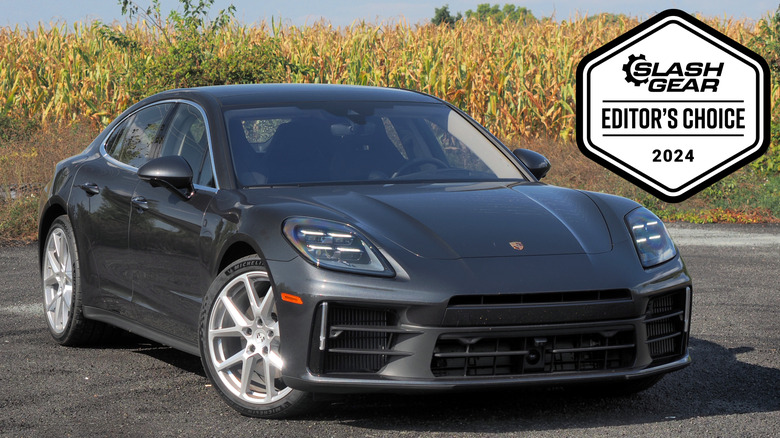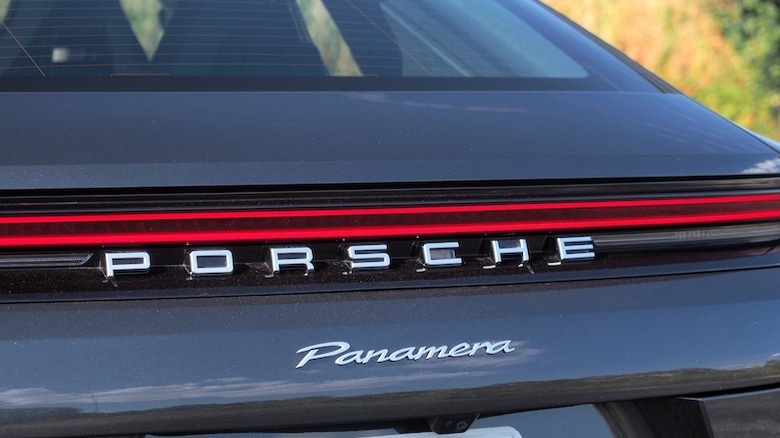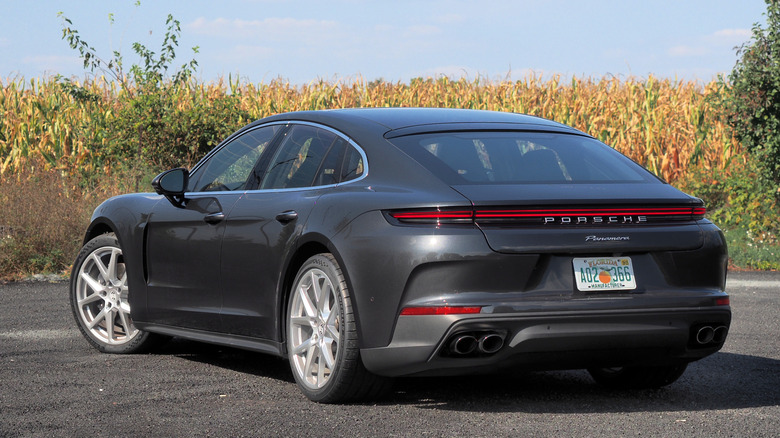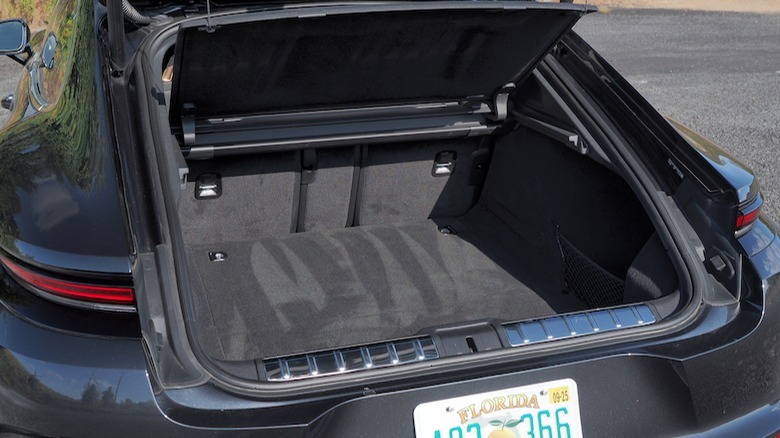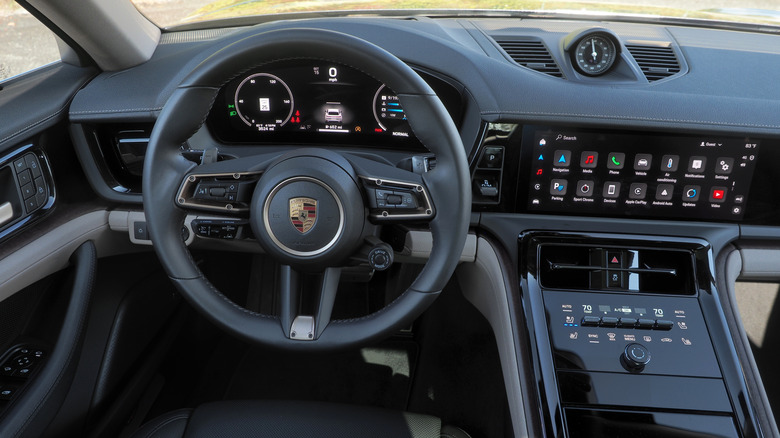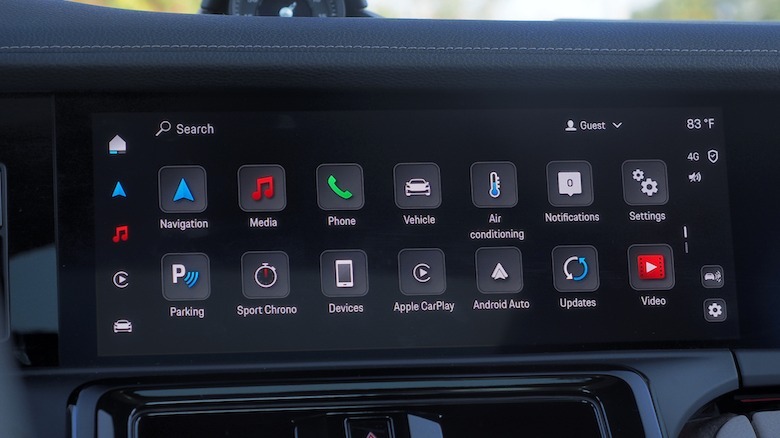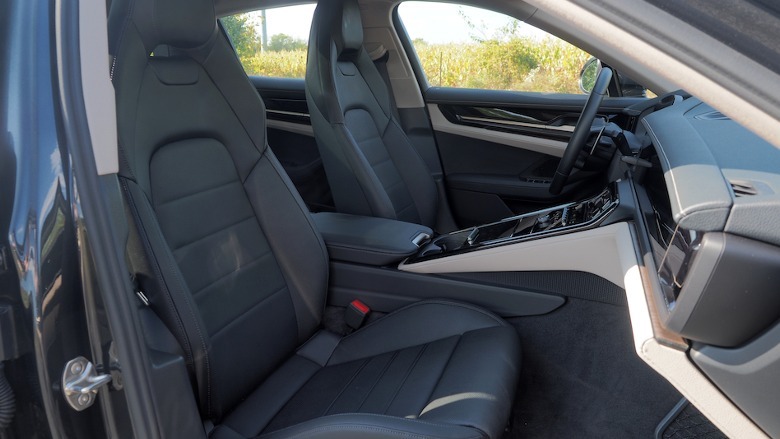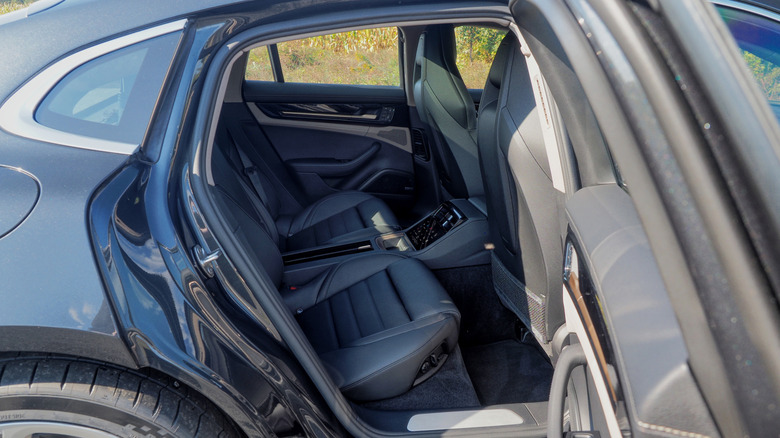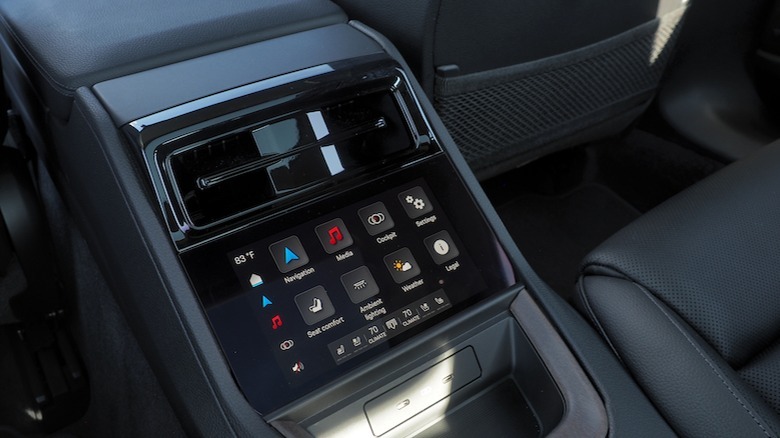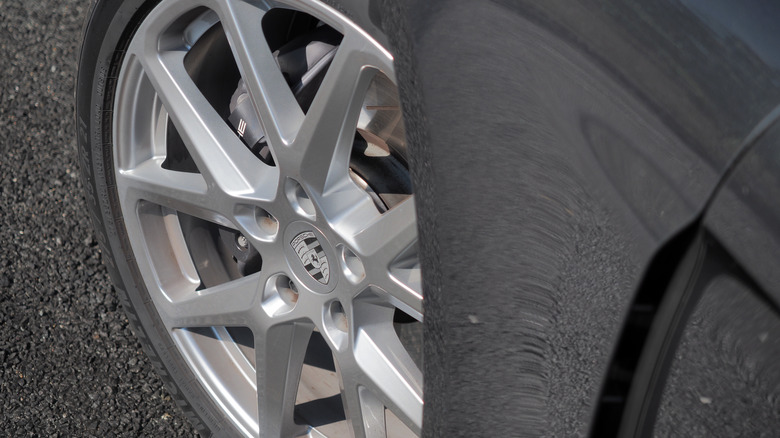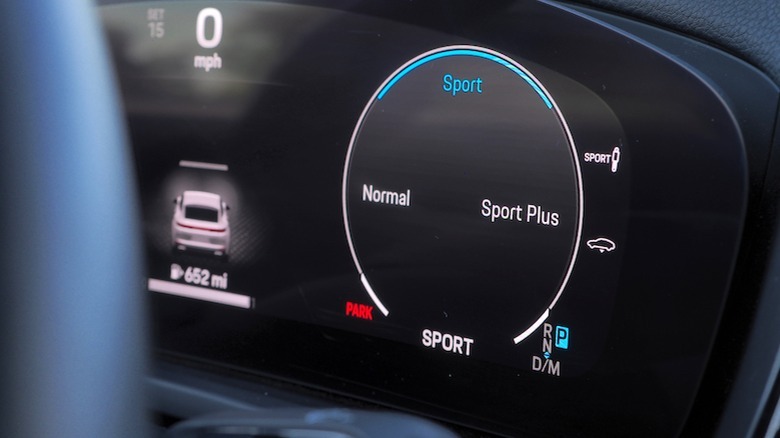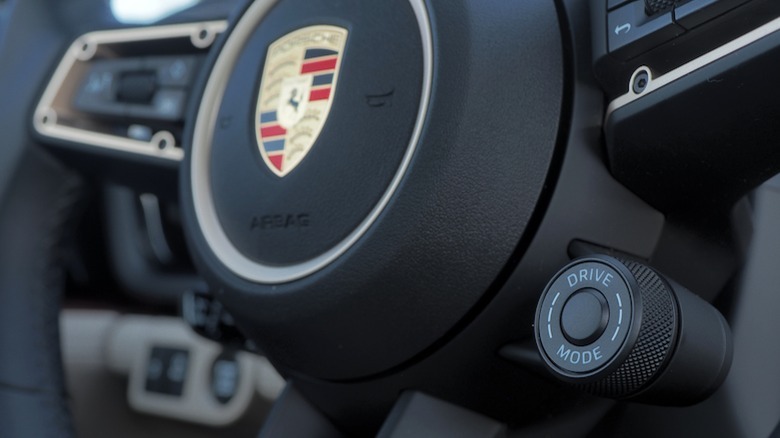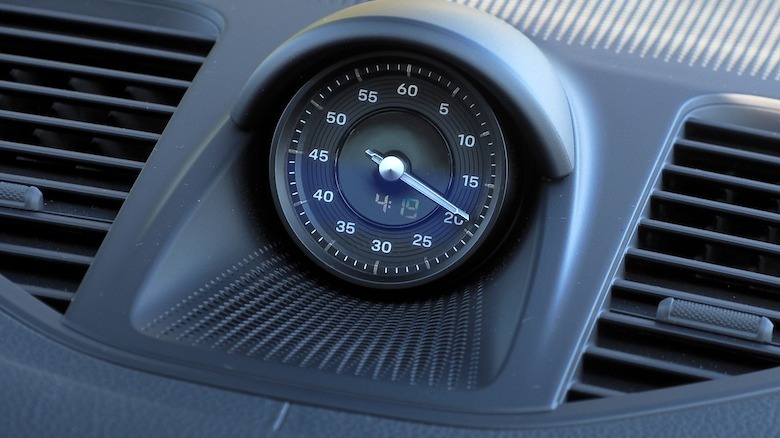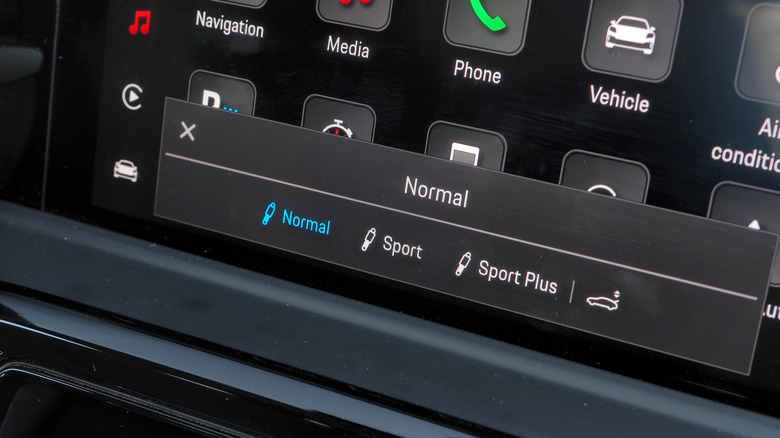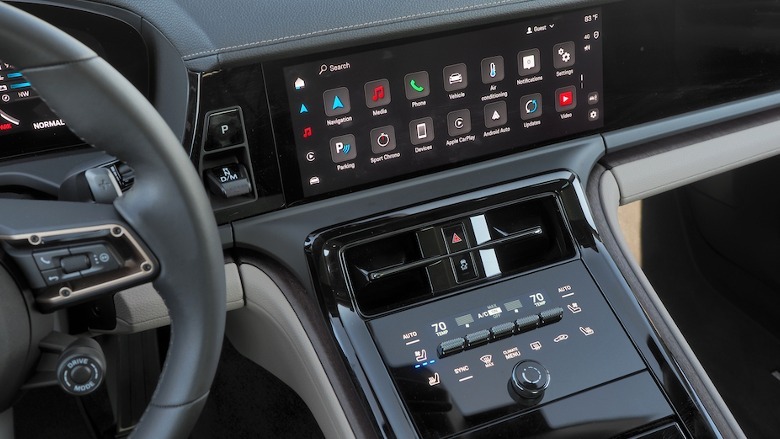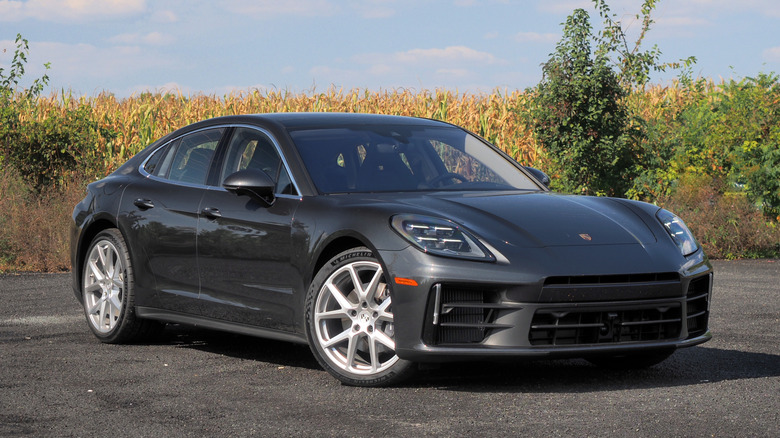2024 Porsche Panamera Review: You Get What You Pay For
- Handsome and practical
- More rewarding to drive than most luxury cars
- High-tech cabin has plenty of toys
- Unexpectedly frugal (if you’re careful)
- Expensive, and options only push it higher
- Rivals are more cosseting
Is true luxury a set of nice leather seats, or a huge touchscreen, or more horsepower than you know what to do with, or is it something more esoteric? It's a question you might ask yourself in the Porsche Panamera, particularly if you practice restraint and stick to the slightly more attainable end of the range. There, to paraphrase the kids who probably can't afford Stuttgart's finest, living the high life is more about vibes.
By the time the first Panamera arrived in 2009, the Cayenne SUV had already absorbed the bulk of the "a four-door Porsche is blasphemous" controversy. These days, concepts like the 1991 Porsche 989 don't look so strange anymore, and it's understood by all but the most single-minded of brand zealots that models such as the Panamera help underwrite development of feisty (but fewer-selling) 911 derivatives.
Panamera ownership kicks off at $102,800 (plus $1,650 destination) for a gas-only model with rear-wheel drive and an eight-speed dual-clutch transmission; the first hybrid-electric model lands at $115,500, and then things only escalate from there. By the time you get to the Panamera Turbo S E-Hybrid, you're looking at $226,500 on the sticker, and a frankly ridiculous 771 horsepower. That, Porsche says, is enough for a supercar-embarrassing 2.8 seconds for the 0-60 mph dash.
More practical than you'd expect
It's a handsome sedan, though — as in previous generations — it looks best, to my eyes, from the front or rear three-quarter angle. From the front, that emphasizes the Panamera's lantern jaw lower fascia and deep creasing to the hood; the quad-slash LED headlamps work perfectly (though you'll pay $1,780 for Porsche's HD-Matrix Design upgrade to get them).
The rear, meanwhile, glows alluringly with the cross-trunk lightbar. It's a surprisingly practical hatchback, too, the power liftgate opening to reveal a readily-loaded 17.4 cu-ft of trunk space (that's more, in fact, than you get in a Macan). Drop the rear seats and that expands to just shy of 47 cu-ft.
It's only from the side, where the roofline heft from the C-pillar backward, looks a little heavy. Such is the price you pay for a cabin that comfortably seats adults front and rear, mind. These gleaming 21-inch Panamera SportDesign wheels — a $2,980 option — look just swell; the standard 19-inch wheels are visually weedy in comparison.
Luxury just feels different
Things get even better inside. There's always been a solidity to Porsche's cabin which, hokey as it might sound, transcends the Panamera's redesign. Something about the degree of click to the steering wheel buttons, and the perfect damping of the stubby transmission selector, and the clack of the metal shift paddles. This isn't Porsche's most lavish interior, nor in this spec its most gadget-packed, but from the snap of the HVAC switchgear to the silent clunk of the drive mode dial, the Panamera simply nails the feel of what a high-end car should deliver.
That's not to say the Panamera hasn't seen a tech glow-up, mind. The latest iteration of Porsche's infotainment system — complete with wireless Apple CarPlay and Android Auto support — is swift and easy to use, served up on a high-resolution display. I like the physical volume knob and the readily-accessible wireless phone charging pad; I'm less keen on Porsche doing away with manual vent adjustment, swapping that for on-screen controls.
It's a spacious cabin, and Porsche sidesteps rear middle-seat complaints by doing away with that spot altogether in the $2,230 Individual Comfort Power Rear Seat package. Instead, you get two low-slung buckets, each with plenty of headroom, and separated by a console with its own touchscreen control over the quad-zone climate control ($1,310), navigation, and multimedia. There are plenty of USB-C ports, front and back, too.
An expensive car gets even more expensive
As anybody familiar with Porsche will have guessed, the sticker price for the Panamera is only the start of things. That rear seat upgrade doesn't include heating back there; it's another $550. A further $1,680 adds ventilation to the front and rear seats, while $1,370 adds thermally & noise insulated glass (which, admittedly, does leave the sedan's interior pleasantly hushed).
The heated GT Sport steering wheel is $330; the night vision system a further $2,450, and the Bose surround sound system adds $1,600. With the head-up display, front passenger display, 360-degree camera with parking assistance, adaptive cruise control with lane-keeping assistance and intersection assist, and a handful of other extras — including the handsome 21-inch wheels and the fetching $840 Volcano Grey Metallic paint — you're looking at about $30k in options alone. That takes this particular MY24 review car from $101,550, including destination, to a whopping $131,750.
Swift but not shocking
Clearly, nobody heads to their nearest Porsche dealership in search of a cheap ride. At the same time, it's worth remembering that the cheapest Mercedes-Benz S-Class — the S500 4MATIC — starts at $117,750, before destination and the automaker's own healthy list of options.
In comparison to that inline-six Mercedes, the cheapest Panamera's 348 horsepower and 369 lb-ft of torque mean it's down on power and — at 5.0 seconds — slower on the 0-60 mph run, too. Porsche, mind you, would rightly point to the Panamera 4 E-Hybrid which does that dash to 60 mph in 3.9 seconds with the Sport Chrono package. That, before options, will set you back about the same price as the S500 4MATIC.
Without those more potent versions, the base Panamera is swift if not shocking in its pace. Think ample rather than excessive: you're not slammed into the seat, sure, but the smooth delivery of power through the rear wheels feels far more than just adequate.
Thumb the Sport Response button in the center of the drive mode dial (it's part of the Sport Chrono package) and you get 20 seconds of maximum performance settings; it's useful for taking advantage of a sudden overtaking opportunity, or just making the most of an impromptu entertaining stretch of road. Play things more sedately, meanwhile, and Porsche's 21 mpg combined fuel economy rating is unexpectedly easy to exceed.
Always firm, but always refined
What stands out most is the refinement. Dual-chamber air suspension with twin-valve dampers is standard across the Panamera line-up, with Normal, Sport, and — on Sport Chrono-specced cars — Sport Plus settings for firmness. Even at its softest, the four-door is never quite as plush and isolated from the road as its luxury rivals, though I'm not sure Porsche buyers would want it to be.
Certainly, it's compliant enough to deal with poor-quality asphalt, while switching up into Sport Plus makes things markedly stiffer and curtails body roll.
Porsche Active Ride, which can individually control the suspension behavior at each wheel, is only offered as an option on the E-Hybrid models. However, rear-axle steering — in which the rear wheels either twist in tandem with, or opposite to, the front steering angle — is a $1,350 option. It promises to tighten up the Panamera's turning circle, or leave the 4,295 pound sedan feeling more agile in higher-speed maneuvers.
2024 Porsche Panamera Verdict
Honestly, while the Panamera may play in the same sort of segment as the S-Class and BMW's 7 Series, the sports sedan feels like a different breed. Aston Martin's beautiful-but-discontinued Rapide, or the overdue-a-reboot Maserati Quattroporte feel like more apt comparisons; the Porsche eclipses both, unsurprisingly. Or, some flavor of AMG GT 4-Door Coupe: the GT 43 has a similar starting price, and drives well, though the rear seats and trunk are both a tighter fit, and Mercedes' dashboard seems dated compared to that of the Panamera.
It's a cliché, to say that the Panamera is the 911 for Porsche people who actually want to transport people in the back seats, but that doesn't mean it isn't true. The four-door is obviously dialed back for daily-driver purposes, especially in base form, but it still channels that dual sense of solidity yet also being poised and ready to take advantage of whatever opportunity for whimsy might arise.
Expensive? Sure, but a 911 is expensive; heck, a 718 is expensive, these days. Neither gives you family flexibility, the big trunk, or the sort of long-distance trip refinement that the four-door delivers so effortlessly, though. The Panamera isn't a compromise, it's just comprehensive.
